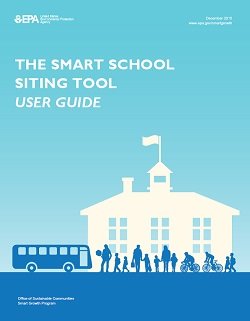Smart School Siting Tool

Community decisions to site and invest in schools influences housing and transportation choices, neighborhood vitality, economic development, the cost of providing local services, environmental quality, and overall community health and well-being.
Given the importance of these decisions, EPA developed the Smart School Siting Tool User Guide (pdf) to help school agencies and other local government agencies work together to better align school siting and other community development decisions.
School locations and community development are closely linked. School locations affect land use patterns and infrastructure investments - and local land use, roads, utilities, and community investment priorities affect where schools are located.
These strong connections between school location and community development suggest the value of coordinating school siting with other community decisions. Improved coordination between school and local government agencies can result in:
- More efficient land use patterns and transportation systems, resulting in environmental and health benefits.
- More efficient use of taxpayer dollars.
- Better learning environments and educational outcomes.
The tool includes:
- A User Guide (PDF) (33 pp, 826 K, About PDF) that explains the links between school siting and community impacts and describes how to use the tool.
- The Assessment & Planning Workbook, version 1.1 (Excel) (9 pp, 2 MB), which helps a community understand how well its school siting process is coordinated with land use and other community planning processes.
- The Site Comparison Workbook, version 1.1 (Excel) (13 pp, 866 K), which helps a community evaluate and compare candidate sites for a new or renovated school.
